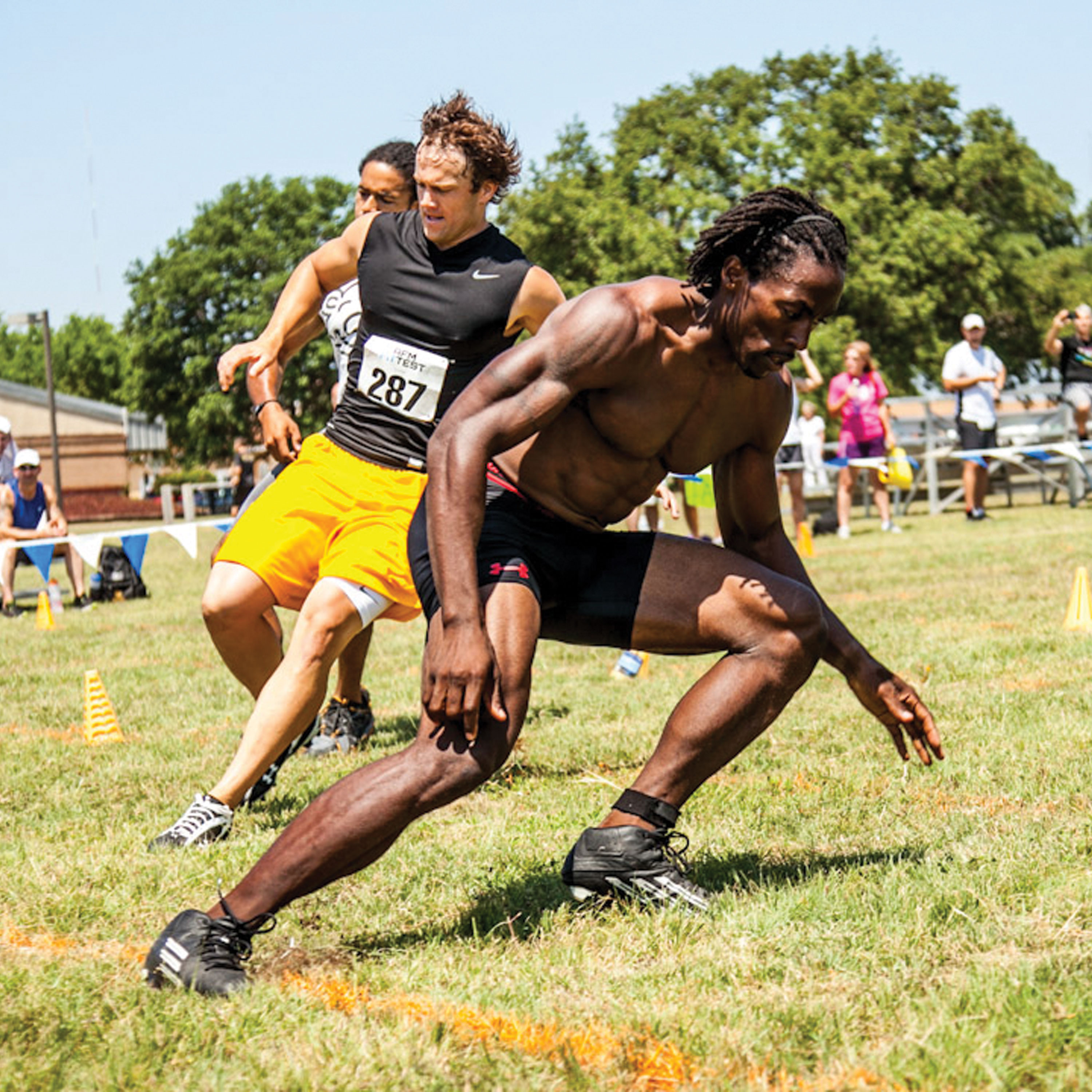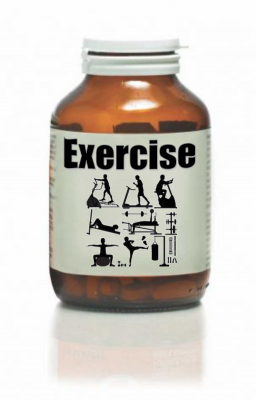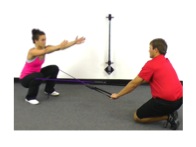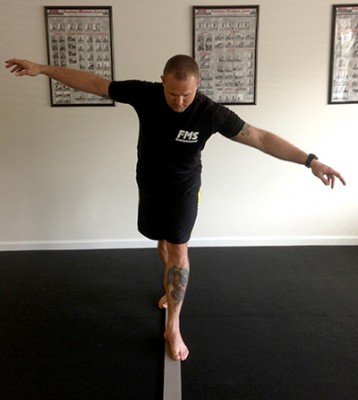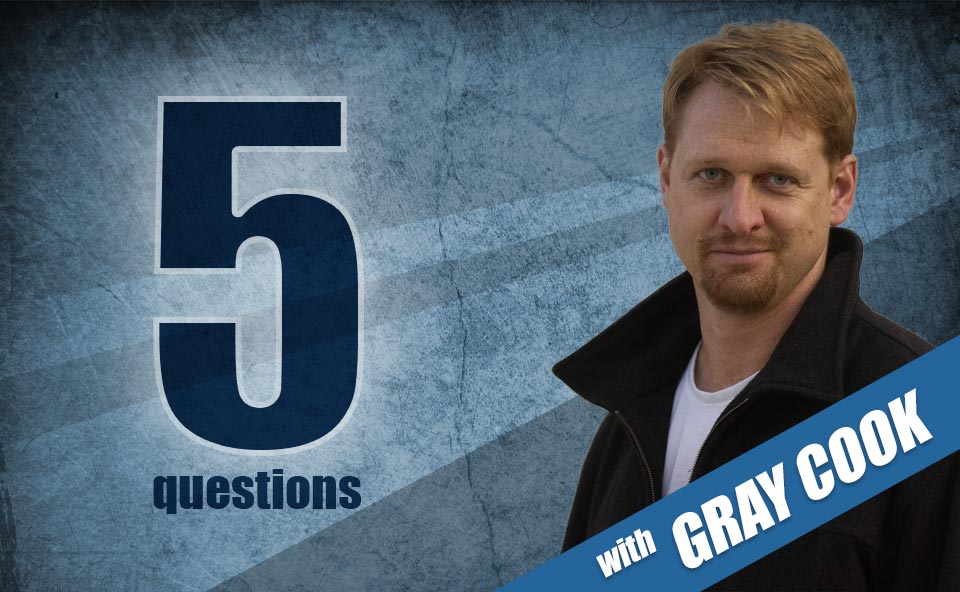Where does therapy end and conditioning begin?
Written by Gray Cook FMS
Gray, you are a strength coach as well as a physical therapist. In your opinion, where does physical therapy end and strength-and-conditioning take over in terms of return-to-sport rehab?
That’s an interesting question and I’m going to try to keep this one brief since I laid down my philosophy in the first question.
Greg Rose and I confronted this when he was constructing a lot of the models that helped the Titleist Performance Institute sort of lay out its framework. Do we treat a golfer like a golfer in a medical, rehabilitation, musculoskeletal or orthopedic situation or do we treat a golfer like a human being? Even though we were extremely sensitive to some of the special needs and special injuries appreciated in golf, Greg and I realized that we were putting the cart before the horse.
If we don’t have that elemental human movement factor—that underlying supportive athleticism —then the skill of golf will not be supported because the soil we plant it in will not hold all of the elements needed for it to take root. Can we hack you some golf skill? Yes. Will it be independently sustainable? Probably not. When we started looking at how to deal with an injured golfer, we went back to a tighter orthopedic model that demonstrates regional interdependence. We would never assume with golfers, or any other orthopedic patient, that the area of their symptoms is the area of their dysfunction.
The SFMA, our medical or clinical version of a movement screen/assessment, breaks movement into four categories:
1) Functional Non-painful is where we all wish we could be. The pattern is enough for us to respond appropriately and adapt accordingly in basic environments and it is void of symptoms.
2) Painful and Functional. Now, this is where somebody is actually able to go through movement patterns and do the things they do. If they do not express to you what they are going through or if you cannot read the signals of their discomfort, you might not realize they’re in pain.
If they had a paper bag over their head, would you really have a problem with their lunge or did your problem with their lunge start after they were complaining about knee pain after an otherwise flawless lunge? We can all see valgus collapse but if we don’t see some of those things, many of us check it off.
Well, if they tell us there’s pain, it’s painful but it’s functional. We use these as markers. We don’t necessarily treat anything here because there’s nothing to really strengthen or stretch, but we do know that the movement pattern provoked a symptom. Let’s set it on a shelf. It’s a marker.
We’ve got two other ways that pain and movement can interplay: dysfunctional non-painful and dysfunctional and painful.
3) Dysfunctional and Painful means that it hurts and you can’t do it. We don’t know whether the pattern is driving the pain or the pain is driving the pattern. There are two things going on here. That’s an area we don’t go into unless we must and then expertise, experience dealing with people in pain, is vital. If you have an array of movement patterns—everything from single leg stance, forward bending and backward bending—you’re going to see a distribution across many of these four categories, the last being dysfunctional non-painful.
4) Dysfunctional Non-painful is where strength-and-conditioning and physical therapy actually meet. You didn’t think I was going to connect these two, did you?
This is where we both must acknowledge minimum levels of criteria for squatting, lunging, single-leg stance, torso rotation and core stabilization. Dysfunctional non-painful is an asymptomatic situation that’s unacceptable on a movement landscape as a vital sign.
Strength coaches, personal trainers and physical educators, we can all identify these four categories with movement screening. If, in a clinical situation, a few movements hurt you and a few other movements don’t hurt you but are largely dysfunctional, quickly think about your play.
I can play around with these positions and bring in my manual therapies, my resets and tape. I can bring a lot of things to these dysfunctional asymptomatic patterns, tweak them a little bit, go back and revisit the Painful but Functional patterns and see if I’ve had improvement. We’re not suggesting that the dysfunction is causing the problem. We’re saying you cannot prove that it doesn’t.
Since we can probably work with one without exacerbating symptoms more so than we can work with the other, let’s pick with the one that’s not creating symptoms. Let’s see if we can have an indirect influence on those symptoms without attacking the symptoms and trying to cover them up or mask them in any way. We’ve got plenty of that happening.
Let’s go at it another way. Agreeing on the Dysfunctional Non-painful patterns and the corrective exercises we use to get out of those holes helps physical therapists, strength coaches, personal trainers and physical educators to respect each other’s turf. We can all clean up movement but when it’s complicated and compounded by pain, there is a completely different scale that we need to read it on. There’s a completely different level of responsibility and more can go wrong.
Remember, in a painful environment, most motor responses are unpredictable and inconsistent. Why would you consider that a learning environment? That is the line. If pain is involved, we’ve got to get somebody who can map that well. We’ve got to get somebody who understands the model that will probably require somebody else to pick up the work once symptoms are off the table. That’s where it comes together.
Related Resources
-
Movement Food
Posted by Gray Cook
-
Walk the Line
Posted by Gray Cook
Please login to leave a comment
2 Comments
-

Beth Rini Scott, PT, DPT 12/7/2015 2:03:27 PM
Nicely said, Gray!! I am sure this is a frequently UN-asked question and one that needs to be clear at all levels and phases of working with clients/patients.
thank you!
-

Keith Harris 12/21/2015 3:21:49 PM
Thank you for this conversation. It clarifies my answer to my wife when she asked me "What am I going to do with a CSCS (or any other fitness oriented certification), in addition to my PT, ATC/L. My answer: become more efficient at helping ( rehab/non-rehab) clients move and perform more efficient. Thanks for your work!

